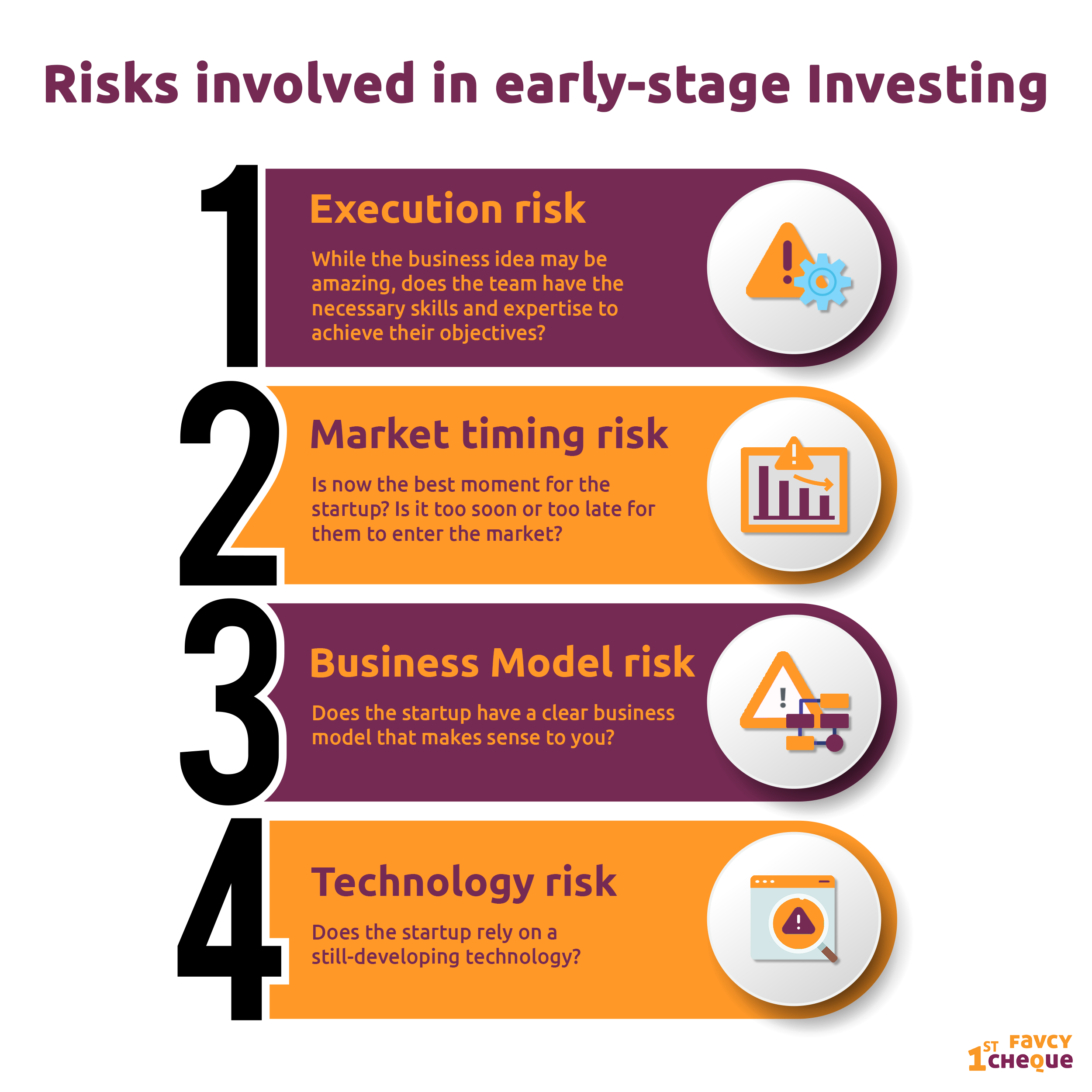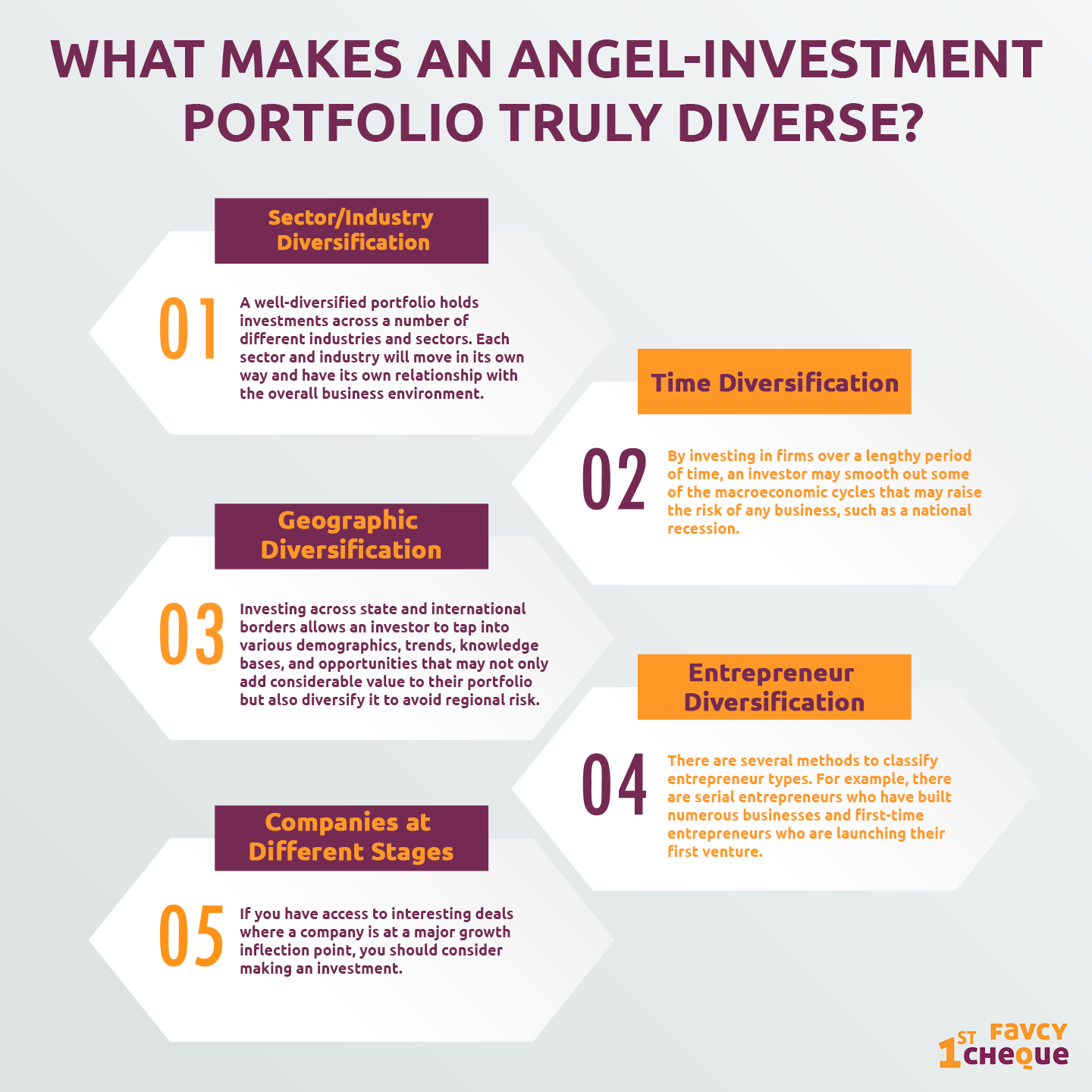
Many Eggs, Many Baskets - The Importance of Portfolio Diversification
By Ninie Verma, Content Associate, Favcy 1stCheque

We all wish we had invested in Zomato, Ola or the multitude of other unicorns that have emerged in recent years. The reality is, however, that the majority of people who invested in those businesses, also invested in a broad portfolio of other businesses which may not have been so successful.
But what made their risk worthwhile? Is it luck? Or maybe some voodoo magic tricks ;)
Actually, there’s a simple concept that I'm sure most of you have come across in your investment journey. Diversification is the single most important and unanimously agreed upon rule of investments.
Variety is the spice of life (or solid returns), as they say.
But what is diversification?
Diversification is a risk management strategy in which investors distribute their capital across a variety of asset classes, geographies, and industrial sectors to minimize their risk exposure.
The idea is, rather than making one big investment and putting all your eggs in one basket, the investor makes a number of smaller investments. Understanding how risk impacts your portfolio and how to utilise diversity to minimize it might just be the spice that your portfolio needs.
What are those risks?
We are aware that early-stage startups are more vulnerable to a variety of risks. These risks are often referred to as ‘unsystematic risks’ because most of the possibility of success or failure lies within the company and is not as dependent on the market as a whole.

Some of these are:
-
Execution risk - While the business idea may be amazing, does the team have the necessary skills and expertise to achieve their objectives?
-
Market timing risk - Is now the best moment for the startup? Is it too soon or too late for them to enter the market?
-
Business Model risk - Does the startup have a clear business model that makes sense to you?
-
Technology risk — Does the startup rely on a still-developing technology?
Risks might be several and it’s impossible to pin down all of them but what every new investor or an expert can agree on is the fact that diversifying your investment portfolio not only mitigates the risk but savours you for big returns in the future.
How many investments mean that my portfolio is diversified enough?
All you’ve heard till now is - Diversify! Diversify! Diversify!
But the next question that arises is - how?
The first thing you need to understand is that it is not just about numbers. A portfolio consisting of 100 nearly identical companies is not diverse. Yet much of the public discourse on portfolio diversification focuses on just this one dimension - the number of investments.
Rather, a diversified portfolio can have early-stage investments in, say, 15 ventures from varying sectors and geographies, with varying exit strategies planned out.
There are many different elements to diversification beyond quantity.
-
Invest in varied industries that you understand well
-
Have startups that are at different stages of development
-
Have startups that are undertaking different kinds of key risks.
-
Have some startups that need your in-depth knowledge and involvement and have somewhere you can afford to be passive.
What makes an angel-investment portfolio truly diverse?

These are the broad verticals to consider if you wish to diversify your portfolio -
1. Sector/Industry Diversification
A well-diversified portfolio holds investments across a number of different industries and sectors. Each sector and industry will move in its own way and have its own relationship with the overall business environment. Some sectors will come into vogue and others will fall out of favour, and this will affect how well the company will do.
2. Time Diversification
To some extent, the macroeconomic environment will have an impact on all enterprises. By investing in firms over a lengthy period of time, an investor may smooth out some of the macroeconomic cycles that may raise the risk of any business, such as a national recession. This also helps to diversify against changes in the financing climate (i.e., the capacity of early-stage enterprises to obtain money), which can be critical when companies seek to raise follow-on rounds.
3. Geographic Diversification
Investing across state and international borders allows an investor to tap into various demographics, trends, knowledge bases, and opportunities that may not only add considerable value to their portfolio but also diversify it to avoid regional risk.
4. Entrepreneur Diversification:
Yes, you heard that right. There are several methods to classify entrepreneur types. For example, there are serial entrepreneurs who have built numerous businesses and first-time entrepreneurs who are launching their first venture. We have both young and veteran business owners. We have both male and female business owners. We also have a diverse range of ethnicities and beliefs. It is also vital to match the type of entrepreneur to the sort of opportunity.
5. Companies at Different Stages: Regardless of the fact that angel investors invest at the seed stage, it is important for portfolio diversity to consider other stages. If you have access to interesting deals where a company is at a major growth inflection point, you should consider making an investment.
Now that you know the various dimensions of portfolio diversification, the million-dollar question that still remains is -
How much money should investors allocate to early-stage investments in order to build a diversified portfolio?
The answer to that is that there is no magic number. No secret 7-digit hymn you can chant that shall please the God of investment ‘home runs’ and in return, bless you with a magical unicorn.
What the portfolio theory does say though, is that most individuals allocate at least 20% of their entire investment portfolio to seeding ventures. This allocation must also be put to use diversely.
A best practice is to pre-determine your budget, as well as the approximate amount that you will allocate to each investment, and stick to it. Being disciplined and committing to diversification is key if your ultimate goal is generating returns.
In Conclusion
To sum it up, diversifying your startup portfolio by investing small amounts and across multiple sectors puts you on a much stronger footing.
At 1stCheque by Favcy, we offer you pre-vetted and risk-mitigated dealflow to invest in. The minimum ticket sizes are kept low across the portfolio so that you can diversify even with your limited corpus. We give you access to all possible collaterals including our thesis (why did we invest in a startup) to help you evaluate each opportunity in depth. And we earmark a lead pool for you in the larger rounds just, so you can consolidate your positions in your favorite startups.
Want to know more about our open portfolio, let’s talk.